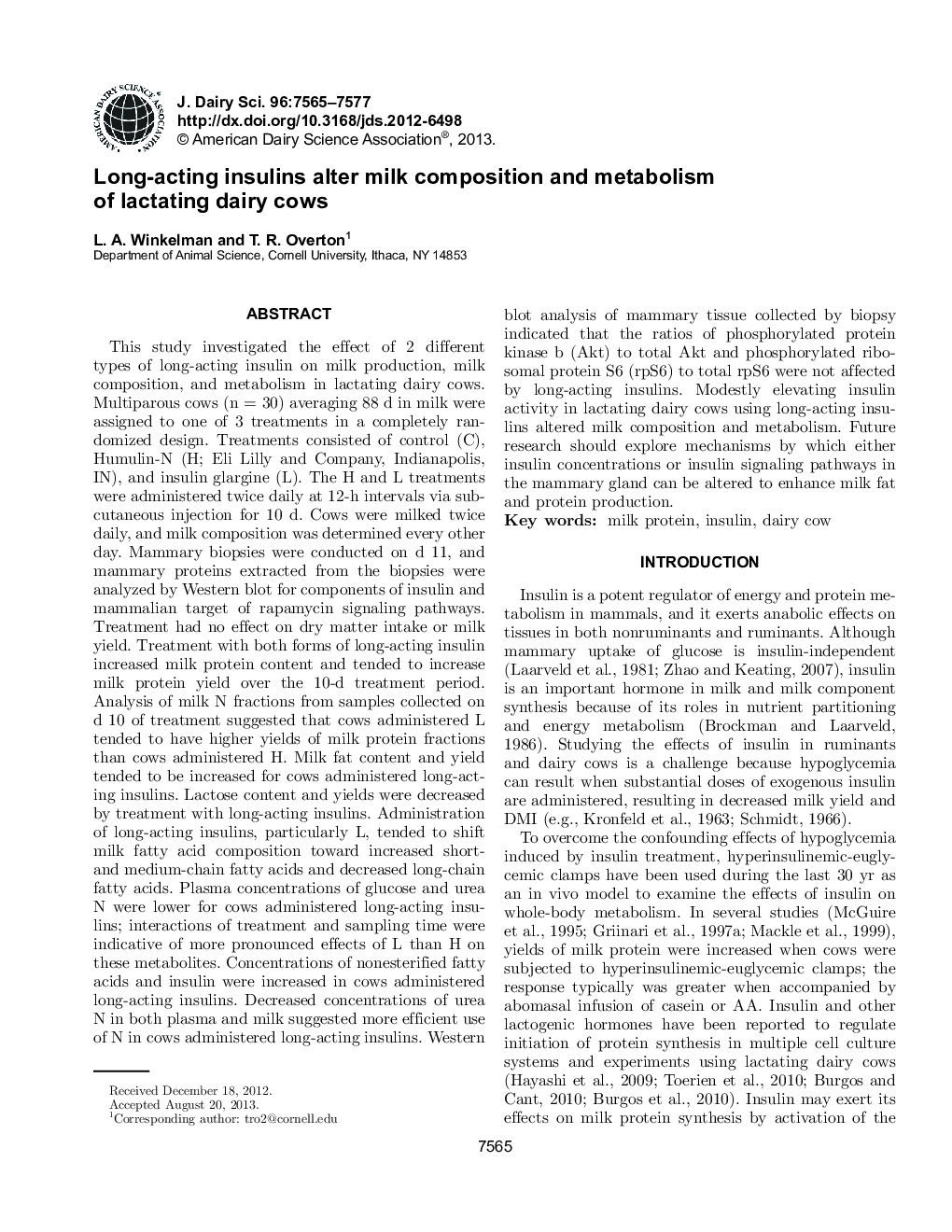| Article ID | Journal | Published Year | Pages | File Type |
|---|---|---|---|---|
| 10977264 | Journal of Dairy Science | 2013 | 13 Pages |
Abstract
This study investigated the effect of 2 different types of long-acting insulin on milk production, milk composition, and metabolism in lactating dairy cows. Multiparous cows (n = 30) averaging 88 d in milk were assigned to one of 3 treatments in a completely randomized design. Treatments consisted of control (C), Humulin-N (H; Eli Lilly and Company, Indianapolis, IN), and insulin glargine (L). The H and L treatments were administered twice daily at 12-h intervals via subcutaneous injection for 10 d. Cows were milked twice daily, and milk composition was determined every other day. Mammary biopsies were conducted on d 11, and mammary proteins extracted from the biopsies were analyzed by Western blot for components of insulin and mammalian target of rapamycin signaling pathways. Treatment had no effect on dry matter intake or milk yield. Treatment with both forms of long-acting insulin increased milk protein content and tended to increase milk protein yield over the 10-d treatment period. Analysis of milk N fractions from samples collected on d 10 of treatment suggested that cows administered L tended to have higher yields of milk protein fractions than cows administered H. Milk fat content and yield tended to be increased for cows administered long-acting insulins. Lactose content and yields were decreased by treatment with long-acting insulins. Administration of long-acting insulins, particularly L, tended to shift milk fatty acid composition toward increased short- and medium-chain fatty acids and decreased long-chain fatty acids. Plasma concentrations of glucose and urea N were lower for cows administered long-acting insulins; interactions of treatment and sampling time were indicative of more pronounced effects of L than H on these metabolites. Concentrations of nonesterified fatty acids and insulin were increased in cows administered long-acting insulins. Decreased concentrations of urea N in both plasma and milk suggested more efficient use of N in cows administered long-acting insulins. Western blot analysis of mammary tissue collected by biopsy indicated that the ratios of phosphorylated protein kinase b (Akt) to total Akt and phosphorylated ribosomal protein S6 (rpS6) to total rpS6 were not affected by long-acting insulins. Modestly elevating insulin activity in lactating dairy cows using long-acting insulins altered milk composition and metabolism. Future research should explore mechanisms by which either insulin concentrations or insulin signaling pathways in the mammary gland can be altered to enhance milk fat and protein production.
Keywords
Related Topics
Life Sciences
Agricultural and Biological Sciences
Animal Science and Zoology
Authors
L.A. Winkelman, T.R. Overton,
